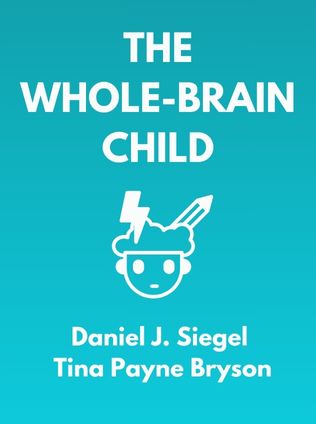
The Whole-Brain Child
Revolutionary Strategies to Nurture Your Child's Developing Mind
By Daniel J. Siegel and Tina Payne Bryson
Published 01/2011
About the Author
Daniel J. Siegel, M.D. is a renowned clinical professor of psychiatry at the UCLA School of Medicine and the founding co-director of the Mindful Awareness Research Center at UCLA. His groundbreaking work focuses on the intersections of brain science and relationships, emphasizing how our minds and interactions shape each other. Dr. Siegel is also the executive director of the Mindsight Institute, an organization that provides courses on personal and professional development. His expertise spans a wide range of topics, from child development to interpersonal neurobiology, and his contributions to the field are highly regarded.
Tina Payne Bryson, Ph.D. is a pediatric and adolescent psychotherapist, as well as the founder and executive director of The Center for Connection, a multidisciplinary clinical practice. Dr. Bryson has co-authored several books with Dr. Siegel, bringing her expertise in child development, parenting, and education to their collaborative works. She is also a popular speaker and consultant, offering practical strategies for parents, educators, and clinicians on how to understand and nurture the developing brain in children.
Main Idea
"The Whole-Brain Child" is a revolutionary book that introduces parents to strategies for nurturing their children’s developing brains. The authors, Daniel J. Siegel and Tina Payne Bryson, present the concept of integrating different parts of the brain to foster emotional and cognitive growth. The book explains how parents can use everyday moments, including challenging ones, as opportunities to cultivate balanced and resilient children. By understanding the basic structure and functions of the brain, parents can help their children develop self-awareness, emotional intelligence, and social competence.
Table of Contents
- Introduction
- Chapter 1: Parenting with the Brain in Mind
- Chapter 2: Two Brains Are Better Than One: Integrating the Left and Right Brain
- Chapter 3: Building the Stairway to the Upstairs Brain: Integrating the Upstairs and Downstairs Brain
- Chapter 4: Kill the Butterflies! Integrating Memory for Growth
- Chapter 5: The Wheel of Awareness: Integrating the Many Parts of the Self
- Chapter 6: Connection through Conflict: Integrating Relationships
- Conclusion
Integrating the Left and Right Brain
The brain is divided into two hemispheres, the left and the right, each responsible for different functions. The left brain is logical, linguistic, and literal, while the right brain is emotional, holistic, and nonverbal. In "The Whole-Brain Child," the authors emphasize the importance of integrating these two hemispheres to help children achieve a balanced emotional state. When the left and right brains work in harmony, children can better understand their experiences and reactions, leading to improved emotional regulation and problem-solving skills.
Connecting with Emotions and Redirecting to Logic
One of the key strategies for integrating the left and right brain is to first connect with your child’s emotions (right brain) and then redirect to logic (left brain). For example, if a child is upset because their friend did not want to play with them, a parent can first acknowledge the child’s feelings by saying, "I can see that you're really sad about what happened." This approach validates the child’s emotional experience. After the child feels understood, the parent can then guide the child towards a more logical perspective by discussing alternative ways to handle the situation or by brainstorming solutions together.
Sign up for FREE and get access to 1,400+ books summaries.
You May Also Like
The Subtle Art of Not Giving a F*ck
A Counterintuitive Approach to Living a Good Life
By Mark MansonRich Dad Poor Dad
What the Rich Teach Their Kids About Money - That the Poor and Middle Class Do Not!
By Robert T. KiyosakiHow To Win Friends and Influence People
The All-Time Classic Manual Of People Skills
By Dale CarnegieFreakonomics
A Rogue Economist Explores the Hidden Side of Everything
By Steven D. Levitt and Stephen J. Dubner



















